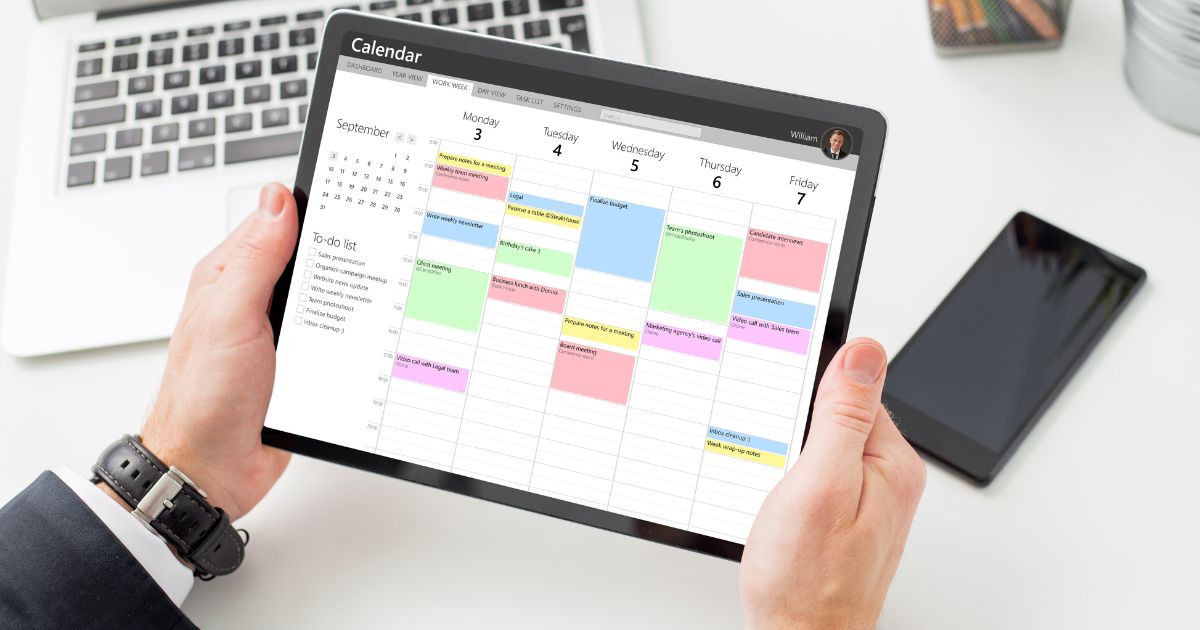Forget your organisations Rolodex, and banish forever the outdated spiral notebook filled with scribbled phone numbers and emails. Welcome to the future of contact organisation, with the ultimate dynamic contact database app – all the latest bells and whistles included! Streamlining your sales process starts right here with the right CRM software!
The app brings efficiency, accuracy and convenience to managing your contacts and prospects from the comfort of your own device. And when we say ultimate, we mean ultimate. We’re talking about an app which every contact enthusiast will appreciate for its capacity to store both basic and detailed information about individual contacts: names, organisation, contact preferences, phone numbers, email, titles, addresses, emergency contact information, your calendar, chat history and much more.
Post Contents
Think of this app as your own personalised customer relations management system – without the expensive setup, integrations and maintenance costs. It’s like having a dedicated customer service team, but for a fraction of the cost. With this app, you can easily keep track of customer inquiries, complaints, and feedback. It allows you to quickly respond to inquiries. Now you’ll be able to find the information you need in a fraction of the time, keep track of customer relations and their product interaction, and have total control over all your contact data. Keep scrolling to find out why this is the go-to app for contact organisation.
Quick Explanation
There are many great contact database apps available on the market today. It’s important to consider your individual needs and find an app that best suits your business needs and budget and outlook.
The Basics of a Contact Database App
A contact database app is the most convenient way to store and manage important contacts, such as clients, customers, and colleagues. This powerful resource can be used to keep track of your contact list, store information on each person in the database, and generate reports from this data. It can be used to easily search for people when you need them and even send automated messages and reminders. It will very quickly become invaluable for you and your sales team, indeed everyone in your salesforce.
The use of a contact database app has both advantages and disadvantages depending on the user’s needs. On one hand, managing contacts manually through spreadsheets or individual profiles is time-consuming, prone to errors, and makes tracking changes difficult. Having all of the contact details in a single, organised location simplifies these tasks and makes keeping up with contact information much smoother. On the other hand, some critics argue that a contact database takes away the personal touch of manually entering each record’s information. However, with a contact database app nothing is lost; instead it offers more features that make it possible to quickly send emails or make follow-ups with specific contacts in your network.
These basics can help users decide if using a contact database app is best for their needs. The next section will discuss what a contact database app is in further detail so you can learn more about the powerful tools it provides for managing your contacts effectively and efficiently.
- According to a report published by Grand View Research in 2020, the mobile contact management software market size was valued at USD 6.7 billion in 2019 and is expected to expand at a compound annual growth rate of 10.6% from 2020 to 2027.
- A 2020 survey of business owners found that 85 percent use some form of customer relationship management (CRM) software, with 63 percent using contact database apps on mobile devices.
- According to Statista, there were an estimated 180 million downloads of contact database apps worldwide in 2018. That’s a big deal!

What is a Contact Database App?
A contact database app is a programme designed to help users store and manage their contacts. It often serves as an online address book or rolodex-style application, allowing users access to the information wherever they go. More advanced versions of contact databases offer various other features, such as task lists and note-taking capabilities. These apps allow for greater collaboration and organisation of contact information amongst multiple users, which can improve overall communication in any organisation.
The debate over contact database apps centres around data security and control. The advocates point out that these apps reduce the chances of accidentally losing or erasing contact information, while opponents feel that they introduce an unsecure means of data storage, involving third-party companies and cloud-based networks. Those opposed to the introduction of contact databases into organisations cite privacy concerns, citing the potential for hackers to gain access to sensitive data stored on these servers.
Ultimately, it is important to understand all technical considerations before implementing a contact database app into an organisation. The right security protocols must be implemented for any new ventures into this realm, both in terms of software as well as user knowledge about data protection best practises. By doing this, organisations can ensure that their contacts stay safe and organised without sacrificing privacy or security. With this knowledge in mind, let us now move onto the benefits of using a mobile contact database app for businesses.
Key Takeaways
Contact database apps can offer a range of features such as address book, task lists, and note-taking capabilities, which can improve collaboration and communication within organisations. However, there is debate over the data security and control associated with these apps, as they introduce potential risks from third-party companies and cloud-based networks. It is important to understand all technical considerations before implementing a contact database app for any organisation to ensure data protection best practises. Benefits of using a mobile contact database app include improved collaboration and organisation, as well as enhanced data security.

Benefits of a Mobile Contact Database App
The use of a mobile contact database app has a multitude of benefits that make managing contacts easier and more effective. One of the most prolific benefits to using a mobile contact database app is the ability to access information anywhere, anytime. With this type of app, users are no longer limited to having access to their contact records only when they are at their desk and on their computer. Having real-time access to customer or client contact information while on the go or away from the office helps ensure that up-to-date contact info is always available, which can help support better customer service. Additionally, mobile contact database apps are typically intuitive and easy to use, so users can quickly look up and store contact information as needed without any delays due to learning curves or difficulties in navigating a tool.
Another benefit of using a mobile contact database app is its potential for enhanced security measures. Many apps include encryption and other safeguards for customers’ data, providing an extra layer of protection for confidential information like addresses, phone numbers and billing records. Furthermore, with cloud-hosted services, a customer’s contacts are backed up automatically, so their data is never lost even in the event of a technical issue or power failure.
However, while there are numerous advantages to using a mobile contact database app, there are some potential drawbacks as well. As such users must be aware of inherent risks such as cyber threats and some data privacy issues associated with storing digital data in the cloud. It’s crucialfor companies and individuals to invest in reputable solutions with robust security protocols that adhere to stringent industry standards.
The ultimate accessibility offered by a mobile contact database app makes it an invaluable tool for customers who need the freedom of accessing their data anytime, anywhere. In the next section we discuss how this ultimate accessibility allows users easy access to their data no matter where they go.
Easy Accessibility of Data
Easy accessibility of data is an essential feature for any contact database app. With easy accessibility, users can quickly and intuitively access their contacts from any device, at home or on the move. In an age where digital contact management systems are becoming increasingly popular, it is important that the user experience remains simple, secure, and efficient as well as displaying intelligence!
On the one hand, a contact database app must be designed in such a way that users are able to quickly access their contacts with ease. The best contact database apps offer features such as cloud synchronisation and multi-platform compatibility so that users can stay connected on any device; this allows them to keep their contacts organised without having the hassle of manually entering each entry. Additionally, most require secure authentication to ensure user data stays protected.
On the other hand, implementing too many mobile-friendly features could diminish some of the more detailed and complex contact management capabilities needed by businesses or power users. Companies or individuals requiring robust contact management should focus on apps that offer superior analytics, collaboration opportunities, contact segmentation tools, and customizable list fields to help them better manage customer relationships. This will provide more control over managing large lists of contacts as well as improving productivity in handling customer inquiries and projects.
In either scenario, easy accessibility of data is a must-have for any contact database app. It enables users to quickly and effectively manage their contact databases across multiple devices with minimal effort while making sure they remain safe and secure against unauthorised access. Now with this in mind, let’s take a look at some key features of a contact database app that make it a valuable tool for managing your contacts easily and effectively.
Key Features of a Contact Database App
A Contact Database App is a powerful tool that can help businesses and individuals save time, improve efficiency, reduce costs, and make the most of their contact management efforts. While there are dozens of different features that an app might offer, the three primary features discussed here are data organisation, synchronisation, and reporting capabilities.
When it comes to data organisation – a contact database should be able to structure and store data logically in a way that makes it easy to find specific information or contacts when needed. Ideally, contacts should be organised into custom-defined categories or tags so they can be quickly found and sorted through. Having multiple levels of organisation within the contacts database will also allow for more precise searches.
Next, synchronisation capabilities are essential for those who need to access their contact database on the go. Synchronisation allows users to sync their contact information across devices, allowing them to make changes from one device and see that reflected in all other devices they use to access the database. This saves time by eliminating duplication as well as reducing potential errors due to manual entry of information.
Finally, reporting capabilities are necessary in order to get insights into customers and leads, identify trends in contact preferences or interactions with your business and perform mass marketing campaigns amongst other CRM tasks without the need for manual processes. The reporting feature should provide real-time analytics about contacts and allow for easy tracking and analysis of customer behaviour, performance metrics or sales figures. This frees up your time and that of your salespeople to focus on products, calls, meetings, linkedin and social media marketing – indeed, all sales activity working towards increased revenue.
These key features should enable users of any Contact Database App to manage their contact information efficiently and effectively. Above all else, a good contact database app should make it easy for busy professionals and entrepreneurs to keep on top of their contacts yet still have time for other important tasks; ensuring that communications stay active without being overly demanding on energy or resources! With all these features combined, organisations will be able to stay organised while maintaining strong relationships with their audience.
Data Organisation and Sync is the next step in making sure that an app’s organisational capabilities are properly utilised in order to achieve maximum productivity. In the next section we’ll explore how effective data organisation and synchronisation can help users efficiently manage their contact information.
Data Organisation and Sync
Data Organisation and Sync are key features to consider when choosing your ideal contact database app. In today’s digital world, staying organised is as simple as knowing where everything is stored and reproducing it if and when needed. A contact database app should provide a simple, standardised method of organising contacts. This helps protect data and minimise the potential for errors in inputting data. Additionally, users should be able to securely store all contact information across multiple methods such as cloud computing services, mobile phones and other digital media.
Data synchronisation capabilities are crucial for any contact database app. Syncing will ease the importation of contacts from old databases, sync data with existing digital devices so that information can be accessed from multiple locations every time you make an entry or change in the app, and automatically update all changes made in the app. Automatic syncing to multiple devices also helps to prevent losing data due to manual malfunctioning or misplacing of the device storing specific data.
Some might debate over the importance of data organisation and synchronisation capabilities due to presented choice between manually inputting data into an app from a spreadsheet and web forms versus using an automatic sync system. Though manual input protocol is oftentimes seen as simpler and faster than automatic sync processes, manual input carries greater risk of human error while automatically syncing also offers higher security standards. Ultimately, manual might seem easier but subscribers should look more closely at their needs in order to decide which protocol works best for them without compromising their security standards or wasting too much time with inputting large amounts of information repeatedly.
To conclude this section, it is important for users to weigh the pros and cons of each approach to better position themselves for success regardless of contact database app choice – understanding ones data organisation needs and how synching can either help streamlining their documents and workflows or create unwanted roadblocks is one factor amongst many that must be taken into account when looking for the right contact database app. Now let’s look into some helpful tips on choosing your ideal contact database app!

Tips to Choose the Right Contact Database App
When it comes to choosing the right contact database app, it’s important to consider a few key features. You’ll want to select an app that is easy to use and navigate, allows users to group contacts, offers rich contact details, provides data security, and is available on multiple devices. When evaluating each of these criteria, there are pros and cons on either side, so be sure to do your internet research beforehand. There is no shortage of information that can be found through a Google search.
First, most people are looking for an app that is easy to use and navigate. Doing research on user reviews can give you a good idea of whether potential customers find the app intuitive and straightforward. But keep in mind that sometimes more complex apps with more advanced features may take some getting used to before they become second nature. Always check available versions and price before making your decision.
Next, you’ll want to make sure the contact database app allows you to group contacts into lists or categories for easier browsing and sorting. This makes it easier for users to quickly locate contacts when needed, but having too many lists can also make it difficult to remember specific groups.
You’ll also want to ensure that your contact database app allows you to store rich contact record details like nicknames, the addition of department or job titles along with their address and phone number information. Although this feature comes in handy for better organisation and better personalization of communication, it does require extra setup time upfront but helps improve customer interactions.
Data security should be another key consideration when selecting the right contact database app. You’ll want one that doesn’t share customer information with third parties and stores encrypted data on secure servers. While this increases security protocols and gives users peace of mind, some apps may offer less protection than others so be sure to review all privacy policies before rolling out any changes within your organisation.
Finally, you will also want to choose an app that works seamlessly across multiple devices – such as desktops, laptops, tablets, and mobile phones – without compromising usability or contact management features. Although this offers enhanced flexibility and convenience for employees who need access from anywhere, compatibility issues often arise when using multiple devices which can ultimately slow down workflow productivity – and the last thing you need is slack in the sales processes!
In summary, when selecting the right contact database app there are a lot of factors to consider – ranging from capture, usability of dashboards and applications right through to data security – and each feature should be evaluated carefully against the needs of your organisation, company insights and whether it will ultimately lead to increased sales productivity. After reviewing each criterion above you’re now ready to move onto the next important factor: device support.
Device Support
When selecting a contact database app, one significant factor to consider is device support. If you’re someone who plans to use both a tablet and phone in your day-to-day work activities, ensure that the app runs on both of those devices, as well as any computers you may use. Additionally, should you switch devices often, look for a contact management app that provides cloud synchronisation across all of your platforms. That way, all of your contacts will remain consistent, despite the device you’re using.
Additionally, consider other software integration when deciding which contact database app best suits your needs. If key programmes are compatible with the contact management platform—such as gmail, notes, email marketing and productivity apps—you can be more confident that it’s the right app for you and your business.
Finally, when considering device support options, keep today’s ever-evolving tech trends in mind to ensure that both current and future iterations of systems are taken into account.
All these features in tandem promote effective contact management and should be evaluated prior to selecting the right tool for you and your team.
Having discussed evaluation criteria relating to device support, let’s now focus on how to effectively use a contact database app.
How to Use a Contact Database App
Using a contact database app is simple, but there are a few key steps that should be taken in order for it to be used most effectively. First, users should begin by entering all of the contacts they want to save into the app. This includes basic contact information like name and phone number as well as any additional information a user wants to keep track of. Contacts can often be imported or exported from other databases, which makes the process of adding multiple contacts much easier.
Once all the contact information has been added, the next step is to begin organising the data. A contact database app should have useful organisational tools that allow users to segment their contacts into different categories such as location, event attendance, customer preferences, etc. By making use of these tools it will become far easier for users to find the exact contact information they are looking for quickly and easily every time they need it.
Lastly, a contact database app should provide users with an option for searching through their contacts easily and efficiently. This means having multiple search fields that narrow down results based on specific details. For example, if a user is looking for an individual who lives in California and sent out a newsletter yesterday afternoon, then the contact database app should be able to quickly generate results for them matching those criteria without requiring users to sift through endless amounts of data manually.
The debate around using a contact database app centres mostly on security questions and worries over potential breaches or hacks. On one hand, using an effective contact database app can greatly improve customer service and streamline workflow when handling customer requests and inquiries. On the other hand, it’s important to consider software’s overall security when storing sensitive information like customer addresses or credit card numbers. Investing in an up-to-date software system with strong encryption methods is essential in order to protect customers’ personal data while still enjoying all the advantages that come with using such a tool.
Both sides of this debate should be considered carefully before moving forward with implementing a contact database app within any organisation, but researching reputable apps with top-level security measures may help alleviate some of the fear associated with hackers or data breaches. At the end of the day, being properly equipped with knowledge and understanding how a contact database app works will determine how successful it actually is for any given company or individual user.
Now that we’ve laid out how to use a contact database app and delved into its pros and cons, it’s time to turn our attention to another important aspect of data management: sharing data securely. In our next section we’ll discuss some tips and strategies on keeping customer data safe while also allowing authorised users access to it wherever they might need it.
Sharing Data Securely
Sharing data securely is essential when thousands of contacts are stored in a database. Keeping personal information secure and private is key, both for customers and contact owners. By ensuring the following points are implemented, consumers can be confident that their information is safe and secure:
First and foremost, encryption technology should be utilised to protect credit card numbers, addresses, phone numbers and other sensitive information. Encryption prevents unauthorised access to data if a system has been compromised by hackers. It also hides any data stored within the system from attackers.
Second, contact databases should not store passwords internally. Instead, they should use password management software such as LastPass or 1Password which employ robust encryption algorithms to store user passwords. This helps prevent hackers from accessing user accounts without authorisation.
Other strategies for securing data include regularly running cyber security audits, using two-factor authentication whenever possible, minimising access to confidential data, using strong passwords on all accounts, using an intrusion detection system (IDS), and updating software regularly with the latest patches and security updates.
It’s also important to have clear policies in place regarding who has access to data and when they may access it, depending on their roles within your company. Limiting access to confidential data only to those individuals who absolutely need it will reduce the risk of unauthorised access or accidental disclosure of sensitive information.
Finally, adopting a certification programme such as ISO 27001 can help establish a framework for maintaining security protocols over time. The framework includes ensuring that necessary hardware and software is in place and functioning properly, performing regular staff training sessions on security procedures and protocols, and conducting periodic risk assessments to identify any potential vulnerabilities in the system.
Ultimately data protection is about balancing the needs of customers with protecting their privacy and security at all times. Using the recommended techniques above will go a long way towards ensuring this balance is achieved.

Common Questions and Their Answers
How do I make sure that my contact database app is secure?
Security is an important priority for any database app, especially one that stores personal contact information. To ensure your contact database app is secure, you should follow best practises such as implementing a comprehensive authentication system, using encryption to protect your data, and conducting regular security audits.
First off, it’s essential to have a solid authentication system in place. This system should include strong passwords requirements, two-factor authentication and/or biometric verification options, and account lockout rules if someone fails to log in too many times. These measures can help prevent unauthorised access to your data.
It is also important to use encryption technology when storing user data in a database. Encryption scrambles data so that it cannot be understood by anyone other than those with authorised access. Additionally, depending on the sensitivity of the information stored in your database, you may want to consider encrypting data both at rest and in transit so that your data remains secure even outside of the database environment.
Finally, it’s important to conduct regular security audits. You should check for potential weaknesses in your system on an ongoing basis and make sure that you are following industry best practises for maintaining secure systems. This can help spot any potential issues before they become major problems.
By taking these steps, you can ensure that your contact database app is secure and provide a safe environment for users to store their personal contact information.
What features should I look for when choosing a contact database app?
When considering which contact database app to use, there are several key features to consider.
First, you should make sure the app has robust security measures in place. A contact database app stores highly sensitive information about individuals and business contacts; therefore, it should have encryption capabilities, multiple layers of authentication, and automatic periodic backups.
Second, you need to plan for an app that offers easy data entry to files as well as editing and searching capabilities. The contact database app should allow for various fields of data such as addresses, phone numbers, email addresses, profession or job title and so on. It should have a robust search system with the ability to sift through large volumes of data quickly and easily, making it your most valuable business solution.
Thirdly, the contact database app should offer integration options with other software systems that your business uses. For example, if you manage customer accounts with a particular CRM platform then you want an app that integrates with that system in order to keep track of customer information and sales activities efficiently.
Finally, the user-friendliness of the contact database app is another significant factor to consider. Does the interface dashboard screen look simple and intuitive? Does it work on android? Does it have a good response speed? Can you arrange a trial? Do the menus allow you to easily add new entries and edit existing ones? Does it include any helpful tutorials, conversations or customer support services? Choosing a contact database app with a responsive user experience will help ensure your staff or sales teams can use it quickly and effectively.
Are there any free contact database apps available?
In a nutshell, yes, there are plenty of free contact database apps available for download. For example, many don’t require a subscription and offer basic features like address book management and contact importing. Additionally, some contact database apps have features like group messaging, file sharing, advanced search capabilities, and synchronisation with other programmes such as calendars and task management systems. Taking advantage of these free apps can be a great way to save money while still managing your contacts effectively.





